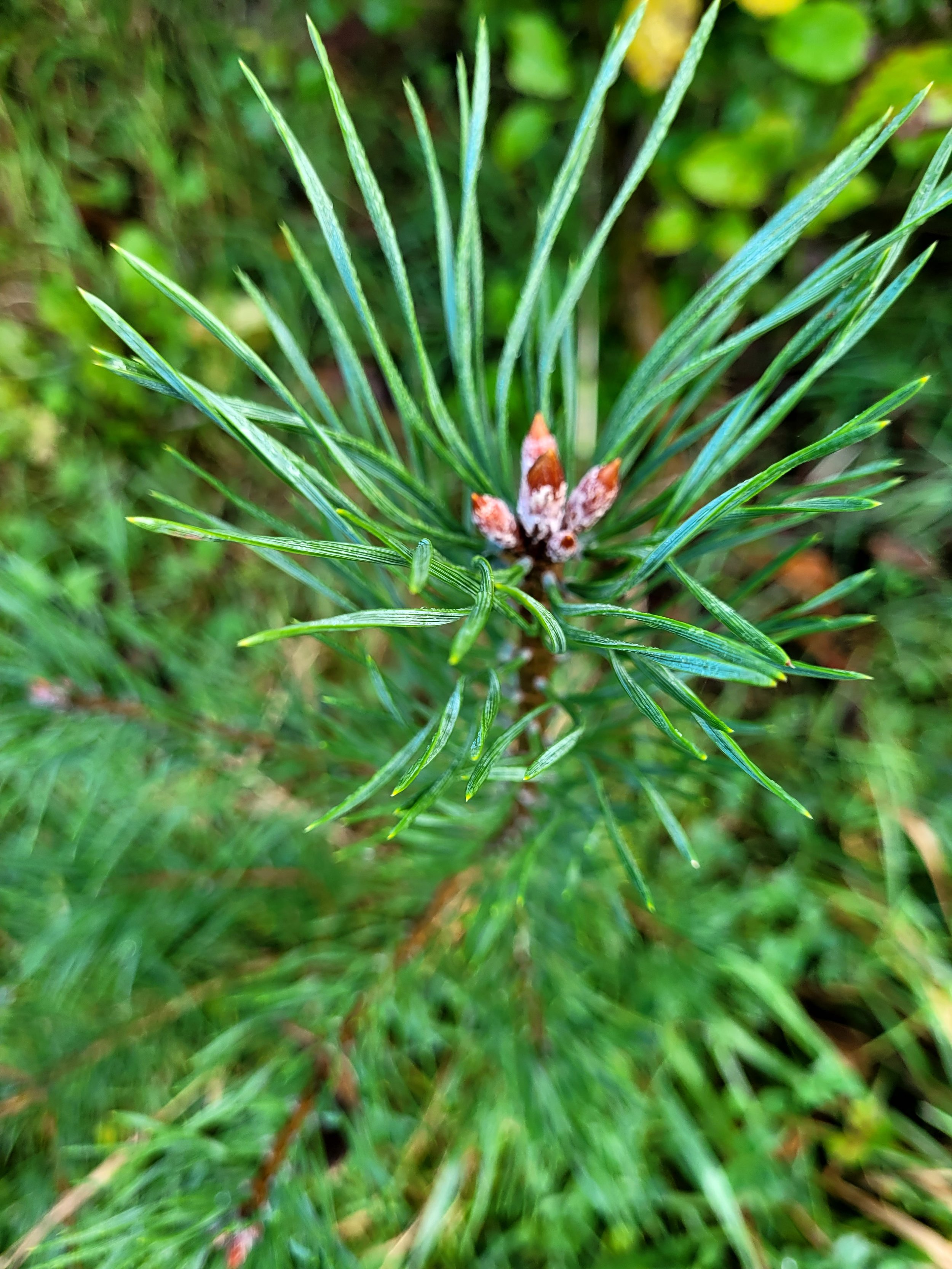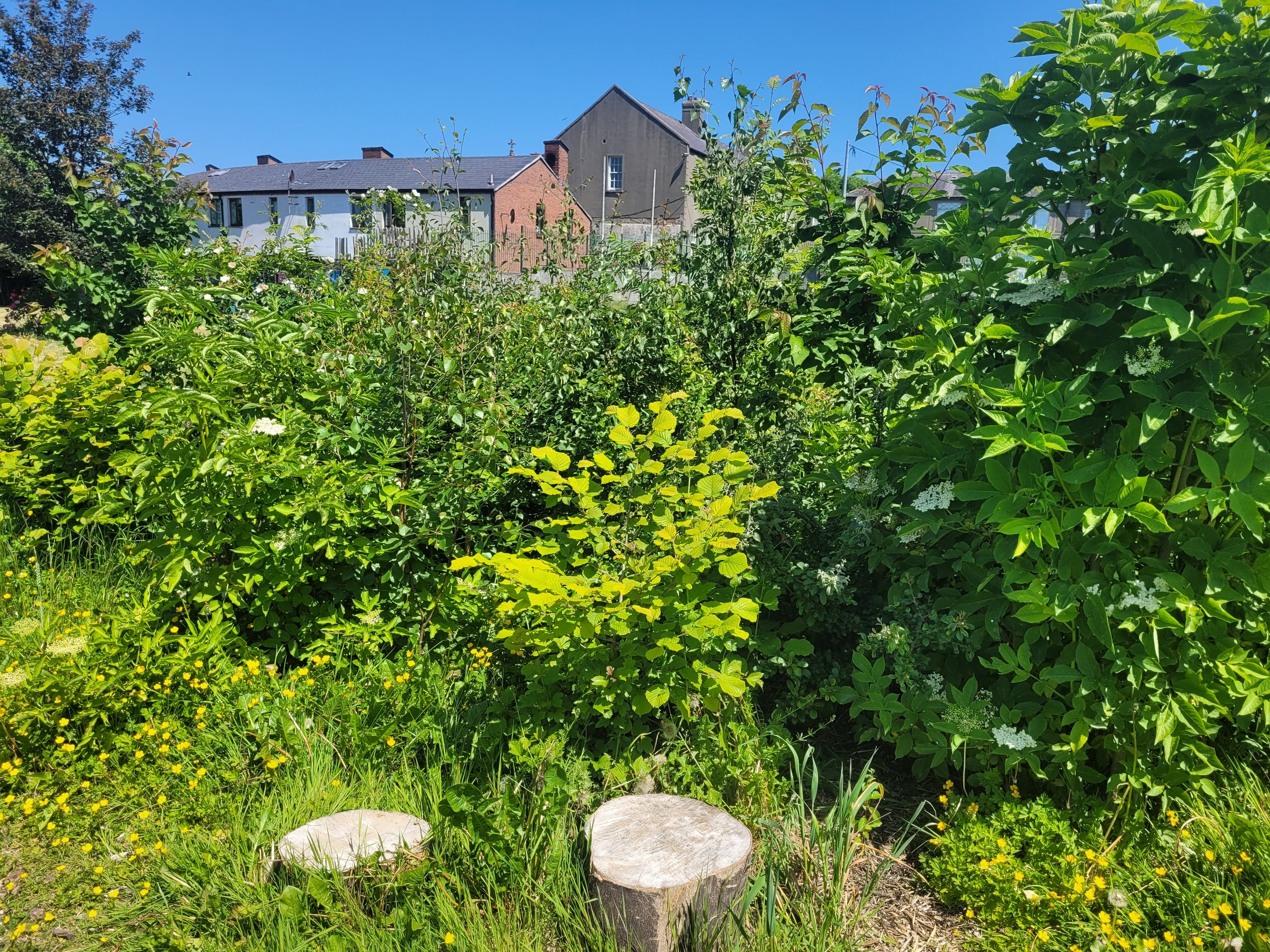Time flies. Especially when you're creating healthy ecosystems and building community, resilience and care for nature. It has been almost four years since we first started helping communities create pocket forests all over Ireland. We know that successful urban greening happens when people are invested in a flourishing future for nature.
A four year milestone report
I have a direct view onto the Pocket Forest through my open windows. So many birds are dancing and singing. An utter delight. Thank you.
Michelle, a teacher with a Pocket Forest on the school grounds
Since 2020 communities have created more than 100 pocket forests ranging in size from a ping pong table to half a tennis court. More than 1,500 children, women and men have taken part in our workshop-based approach, learning how to repurpose waste to improve soil health, plant native Irish trees and shrubs and care for them, while they care for us.
We love what we do and we love the joy that people bring to working with us, learning how to regenerate urban soil and combine it with healthy native trees and shrubs to create resilient ecosystems. Forests have a lot to teach us about collaboration, diversity and recycling resources. We talk about all these ideas while we work alongside people in Pocket Forest projects. We try to help people feel like nature can be a partner in their lives. We hope our enthusiasm is infectious and we leave people with a lasting connection to a natural ecosystem in their school, neighbourhood or place of work.
Having green space near your home can extend your life by two and a half years, according to a new study by researchers at Northwestern University in the US. People with access to nature age more slowly.*
Impact interviews
We went back to talk to some of the people we worked with to find out what they got from the experience.* The top three impacts of working with us were:
Becoming re-enchanted with nature
Community building benefits
Wellbeing and connecting spaces created
Reconnecting to each other and the living world
Pocket Forests give us a new lens on life, with nature coming into sharper focus. Testimonies below:
-
It made the students a lot more aware of the importance of having something like that in your area or community…That you can contribute to the area by including somewhere where flies and bees and pollinators can live. To create a habitat for them, but also just creating a nice space where people can relax in…That it doesn't have to be concrete everywhere.
-
The biggest change is people are talking about it because it's visual. It's a point of conversation. So, if people are outside, they are stopping and remarking on it…People are noticing it and people are liking what they see. Neighbours have also been planting and using their Instagrams to spread the word…We keep bringing up the conversation about trees and what Pocket Forests are. Your project has really worked for us.
Building Community comes naturally
We've discovered that creating a Pocket Forest also creates a community of people who go on to create more connections with nature and each other. Testimony below:
-
We had a gardening group that was part of the centre involved in the project. And we linked up with them and we linked up with the residents in the area…Pocket Forests was the link between the two so that was really good..it's just been good strong links made between the residents' group and ourselves, which has been really nice. Our remit is to be a community Family Resource Centre. So now we're reaching different people in the community than the ones that might come in for courses. So it has just brought us together. And that's been really good.
Wellbeing and connecting spaces created
Pocket Forests become amenities for learning and wellbeing Education around caring for the natural world has a real place to begin when people can see it as part of their everyday life. Testimonies below:
-
We use it for classrooms. We have benches up there now as well and people go out there. I know I've seen Spanish classes out there lately, music classes going out there. And it's also used by students with additional needs.They go up there for a quieter space. So there's a nice quiet area where you can actually kind of retreat to and you're hidden amongst the trees while you're out there.
If they're studying a habitat it becomes a very useful place for us to actually study. To see what bugs are living in there, what plants, what trees and animals and stuff. It's something tangible for them as opposed to just talking about it. And we don’t have to travel far because we can show students what we've done in our own little space. I've seen nothing but positives from it … I thought the hands-on element was brilliant; that from day one the students were involved in the planning and everything. I think it ran very well.
-
The children are obsessed with finding snails and are really gentle with the snails and we talk about how the snails have to stay close to their family and friends so we leave them in that area … It's like a domino effect. The better the stuff around the area, the better things people will do. And now people are taking pride and doing their gardens and talking about gardening more.
-
We've got two benches now not far from where the pocket forests are. And you see people wander over, they read the sign, and they sit back down again. Because there's so many school families in that area, because the signage is up, and it's explaining what we're trying to do, there is an awareness. We haven't officially invited children … we haven't done anything with that. But I do think just because the signage there, and it's growing.
Learning from our experiences. What we do is new and different. Taking a wilder approach to natural spaces takes time and understanding. A Pocket Forest helps to build that understanding. Testimony below:
-
Well you changed my mind because you used a phrase at one stage about dandelions being a liferaft for insects and creatures to survive so I think a small little presentation in that sense to maybe let them understand what we're trying to achieve and that does take time and it's not going to be a manicured garden. And if we had waited out that initial period it could have been wonderful.
*Survey methodology. Participants in Pocket Forests projects were interviewed in September 2023 in person in a series of online and face-to-face meetings to ask about their experiences.





















